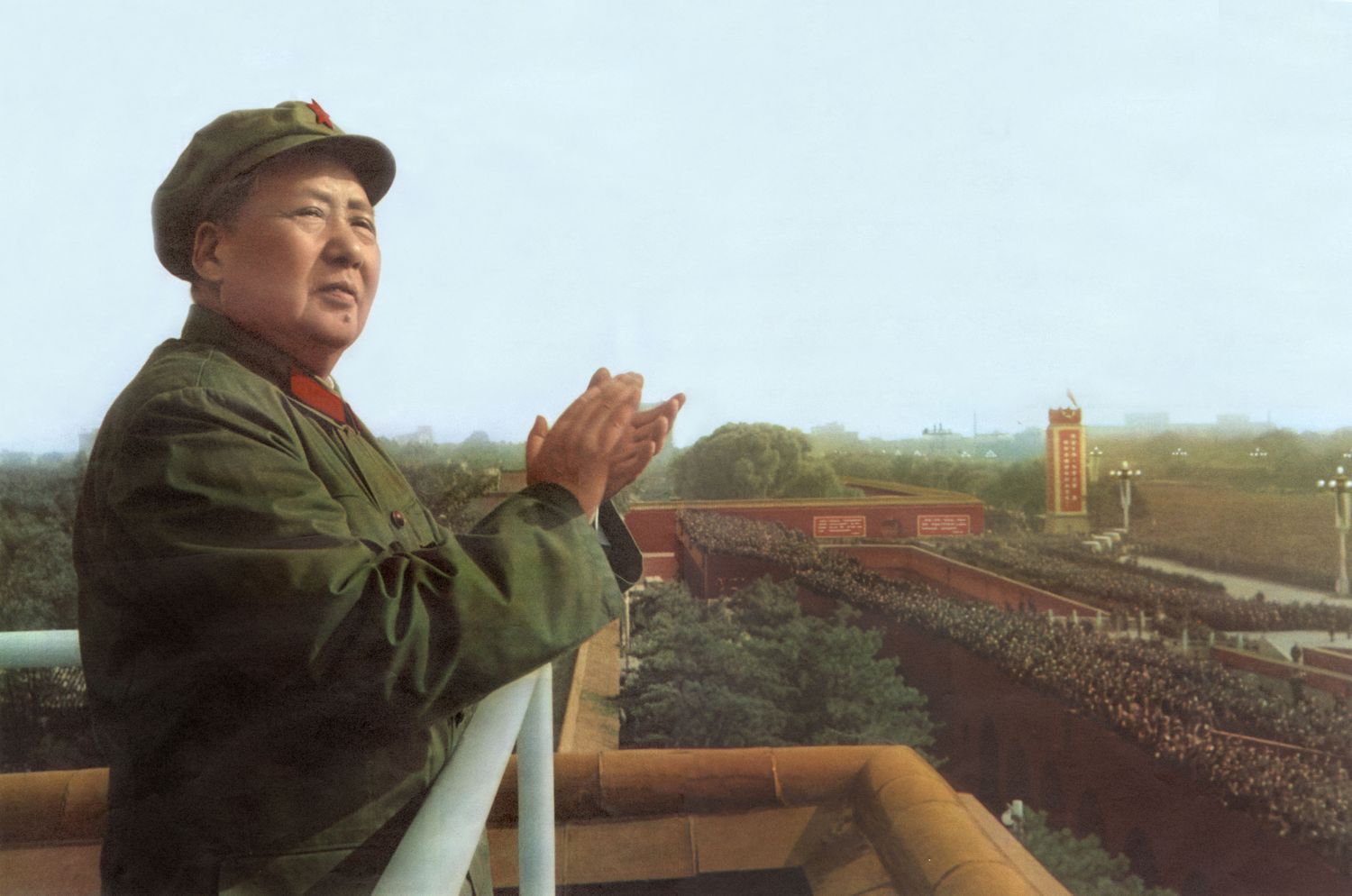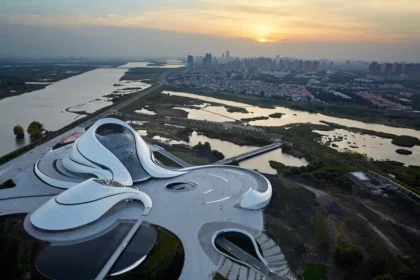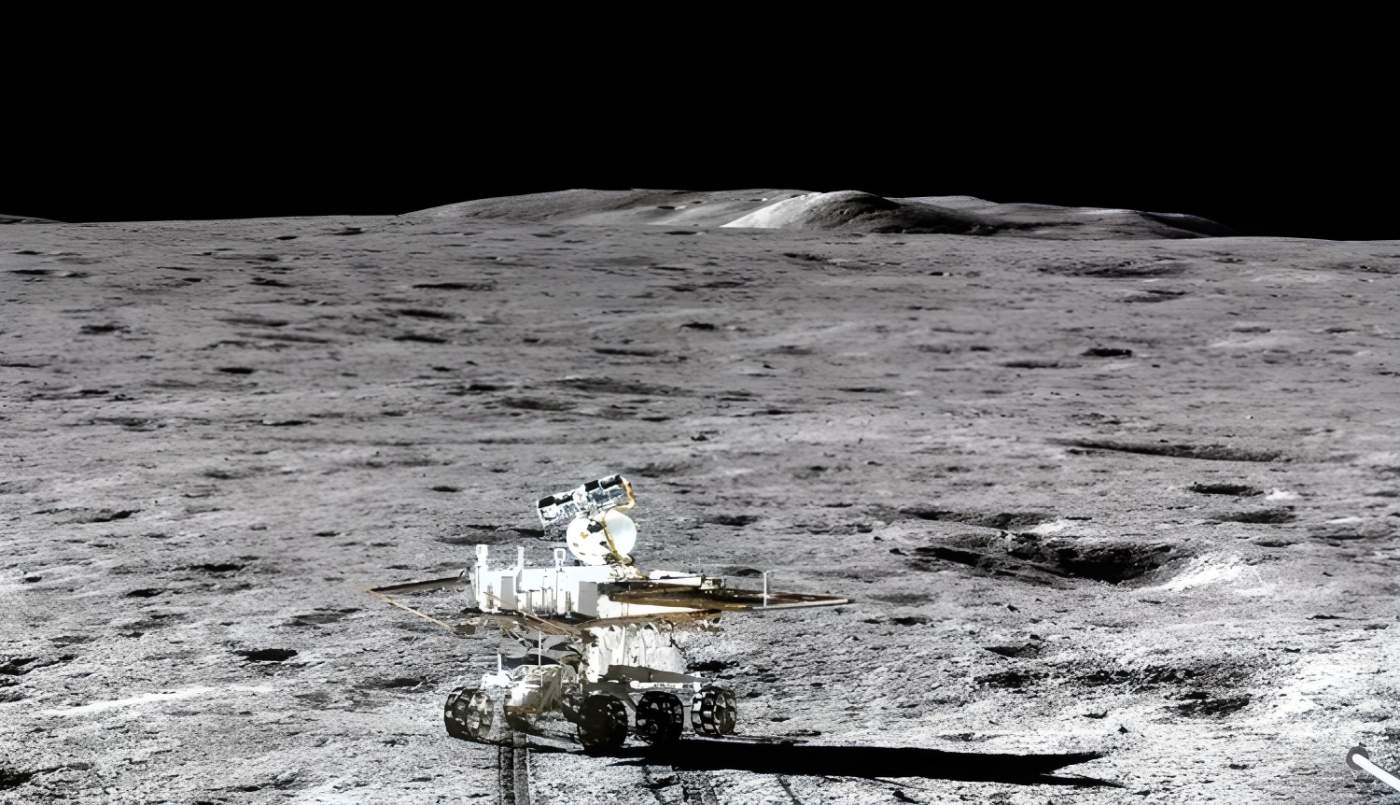As a result of the revolution, China is now a unified nation, no longer subject to the Western dominance that had been a source of turmoil since the late 19th century. But the conflicts inside Mao Zedong’s (1893–1976) ideology—between Marxist philosophy and a denial of modernity, between the building of a totalitarian regime and the wish to see the people rule themselves via a continual kind of activism—led to actual disasters. As a result, the Great Leap Forward sent the nation into the worst famine of the 20th century, which directly resulted in the deaths of tens of millions of people. The Cultural Revolution rapidly deteriorated into a bloody civil war. But even now, some thirty years after his death, the man who dubbed himself “The Great Helmsman” continues to reap the rewards of the personality cult he created. It is still difficult to tell the difference between the mythic fate of a legendary politician and the actual life of an authoritarian dictator.
- Mao Zedong as a young man: From privileged peasantry to communist activism
- Towards a new communist thought
- The proclamation of the People’s Republic of China in 1949
- Mao’s Great Leap Forward
- Mao’s Red Book: The chaos of the Cultural Revolution
- Declining power against a backdrop of a cult of personality
- Mao Zedong’s death
- Mao Zedong and his family
- TIMELINE OF THE MAO ZEDONG
Mao Zedong as a young man: From privileged peasantry to communist activism
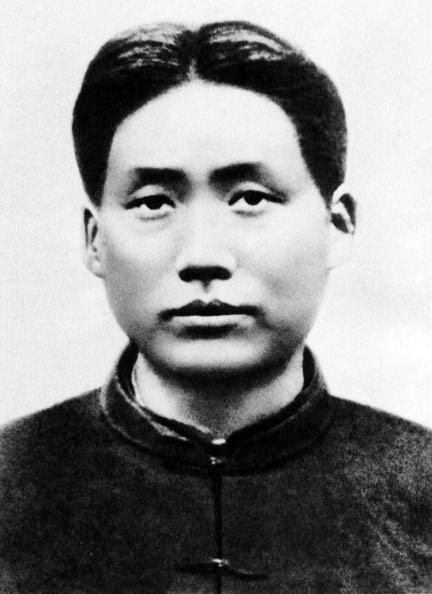
On December 26, 1893, in the town of Shaoshan, Hunan Province, west-central China, Mao Zedong entered the world. He was raised by a prosperous family of peasants. Nationalist ideals abounded in his locality, much as they did in China, which was experiencing a crisis at the same time. Mao Zedong, all 1.80 meters of him, wanted to join the nationalist army when he was eighteen years old. But the trial period ends up being too short, and he decides to enroll in Changsha’s standard school instead.
There was evidence to suggest that a young Mao had conflicts with authority figures, but this did not prevent him from graduating and becoming an assistant librarian at Beijing University in 1919. Upon moving to a city, a hub of learning, he educated himself independently in Western philosophy, in particular Marxism. But he also had strong ties to classic Chinese culture and drew inspiration from the past more than anything else. In Beijing, he came across literature and student activists.
Indeed, Mao was sympathetic to the revolutionary cause and took part in the Changsha uprising of May 4, 1919. The teenager wavered between socialism, nationalism, and communism. The last political hue to win his support was this one. So, he went to the inaugural Chinese Communist Party conference in Changsha on July 23, 1921, and spoke for his faction. He was a staunch supporter of these views and faithfully followed Soviet theory, but for practical reasons he declared his support for an alliance with the Guomindang (Chinese Nationalist Party). From 1923 forward, he served in the executive office during the United Front (an alliance between the Guomindang and the Chinese Communist Party).
Towards a new communist thought
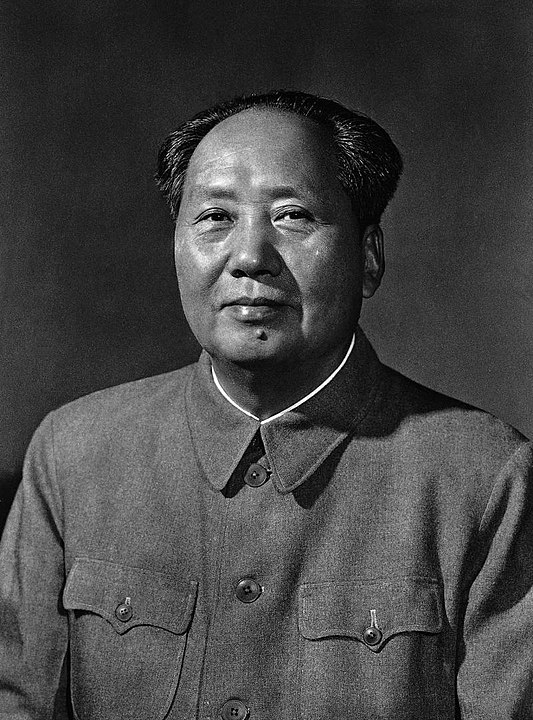
For Mao Zedong, 1927 was a watershed year. In fact, the United Front was dissolved after a failed workers’ rebellion in Shanghai in April 1927, which provided an opening for Chiang Kai-shek, a leading figure of the Kuomintang. Following this, the Guomindang launched a massive onslaught against the CCP. The fighting between the two sides was the culmination of tensions that had been building for almost a year. However, the Guomindang proved to be an overwhelming force. Mao attempted to organize a peasant army to quell the rebellion, but his efforts were ultimately unsuccessful.
After his failure, he was shunned by the CCP. Then, in the Jiggang Mountains, he established the first Chinese Soviet, where he could try out a different party structure and organizational model. A report Mao made that year, “Report on the Investigation of the Peasant Movement in Hunan Province,” served as the impetus for the formation of this group. The CCP’s political policy at the time agreed with Moscow’s by making the proletariat the revolution’s backbone. Nonetheless, China’s industrial landscape was still in its infancy, making students a more fertile ground for revolutionary Marxism-Leninism than the working class.
Mao Zedong developed a peasant-based philosophy of communist revolution, focusing on the rural areas where he was raised. He had a romantic view of the peasant revolts and said they might form the backbone of a revolution to restructure food production. This was one of the major differences between Maoism and Russian Marxism-Leninism, which had never placed a premium on rural life. Expelled from the CCP for a year, he was eventually readmitted. Up until 1934, he assisted Zhu De in expanding his system across the area. But when the Guomindang army advanced, Mao had no choice but to retreat and launch the Long March.
This particular one takes place between October 1934 and October 1935, covering a distance of around 10,000 kilometers. Mao, weakened by malaria, hobbled along with the help of a nurse and a secretary. On several occasions, four men would carry him on a litter while an oilcloth shielded him from the elements. The Communists were able to escape the encirclement of the nationalists thanks to this treacherous and fatal adventure, which became a true myth later on. It also served as a vehicle for the communist message to reach the rural populace. In 1935, Mao’s leadership of the CCP was bolstered by this.
The proclamation of the People’s Republic of China in 1949
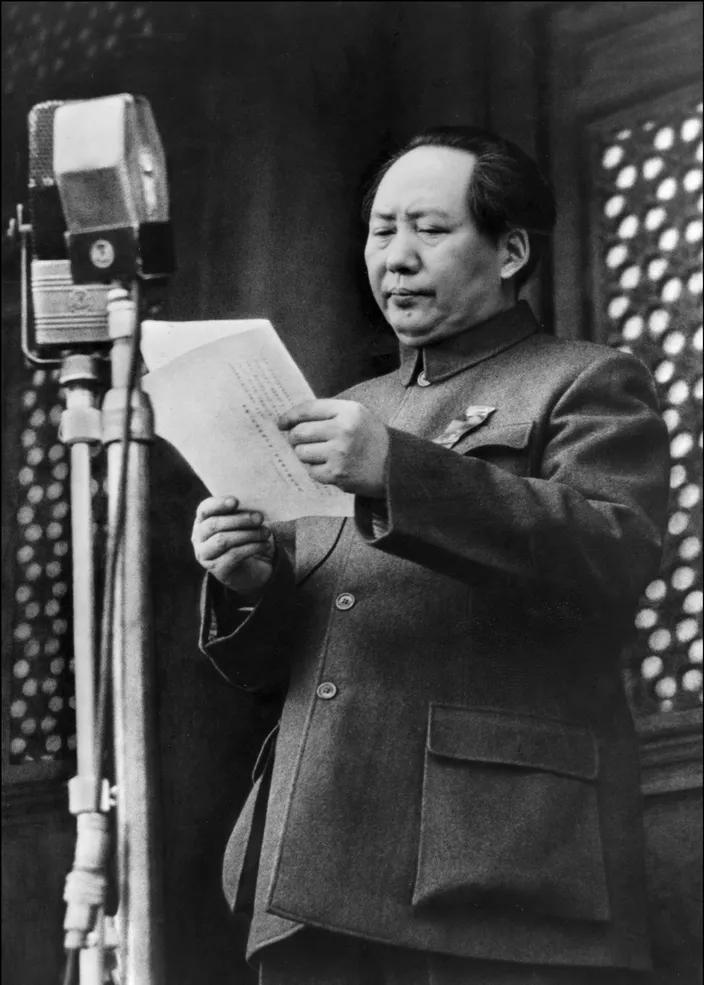
After years of experimenting with guerilla warfare, Mao Zedong bolstered it to its furthest extent, but the situation shifted in 1937 with the outbreak of the Sino-Japanese War. From that point on, the civil war was halted to some extent, and the Communists gained valuable guerilla warfare experience by stopping the Japanese. During this time, Mao used his rising stature within the CCP to win over more people to his rural-based vision of communism. The peace treaty with the Guomindang that had been in place since Japan’s surrender in 1945 quickly crumbled. The Guomindang, still under Chiang Kai-shek’s leadership, withdrew and eventually crumbled in 1949, eventually fleeing to Formosa (Taiwan). The People’s Republic of China was officially established by Mao on October 1.
Now that he was at the pinnacle of authority, Mao set about reforming the nation thoroughly, although with some trepidation. He made an effort to improve relations with the Soviet Union, which he initially viewed with suspicion, and even embraced some of its policies. Despite China’s diplomatic isolation during the Korean War, Mao permitted Chinese “volunteers” to help the nation establish its military might. His paradigm of thinking is rooted in the peasants, but it has nothing in common with Soviet bureaucracy.
The announcement of de-Stalinization by Khrushchev accelerated Mao’s drift away from the USSR. The “Hundred Flowers” campaign, begun in 1957, was an attempt to win the hearts and minds of the educated elite. Everyone was encouraged to speak out against the CCP. At the same time that the opening was taking place, Mao was secretly putting in place a plan to increase his personal authority at the cost of the Party. Mao elevates himself above the latter by calling for its denigration, establishing a direct line of communication between himself and the revolutionizing masses. This same principle would justify the Cultural Revolution.
Mao’s Great Leap Forward
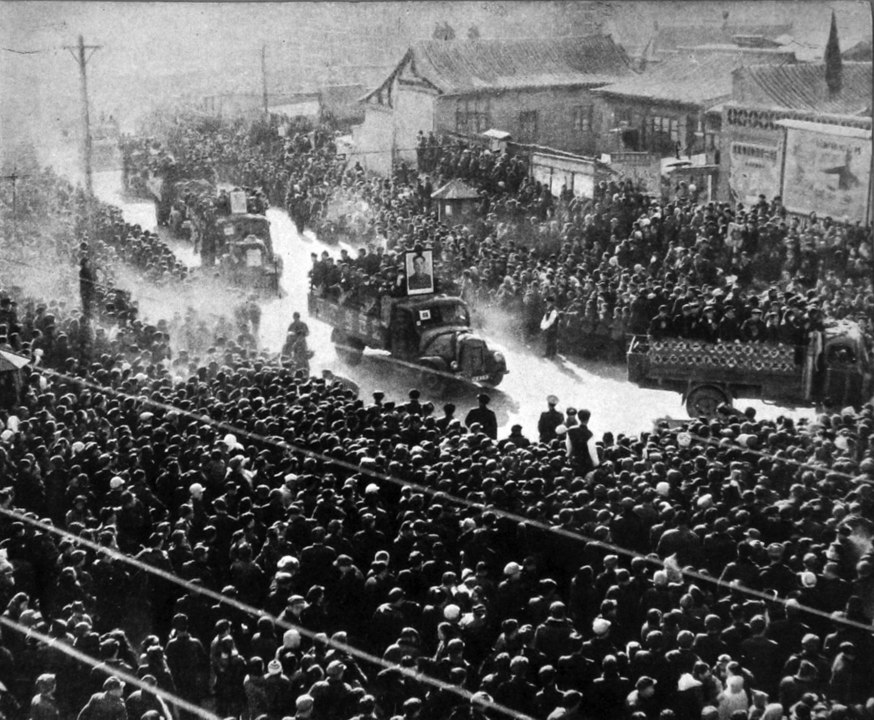
The “Great Leap Forward,” Mao Zedong’s first major intervention, occurred in 1958. The goal was to completely restructure society by employing everyone in communal settings. This was envisioned as a replacement for the family unit and a means of increasing output. One further objective was to stop relying so much on the Soviet Union’s economy. However, the Great Leap Forward was overly ambitious, and it threw the economy, particularly the agricultural sector, into disarray. The catastrophe that Mao’s program became was made worse by the fact that he refused to admit it had failed. There was a horrible famine since production was inadequate. Mao Zedong was deposed by Liu Shaoqi and Deng Xiaoping 10 years after the founding of the People’s Republic in 1949.
Mao’s Red Book: The chaos of the Cultural Revolution
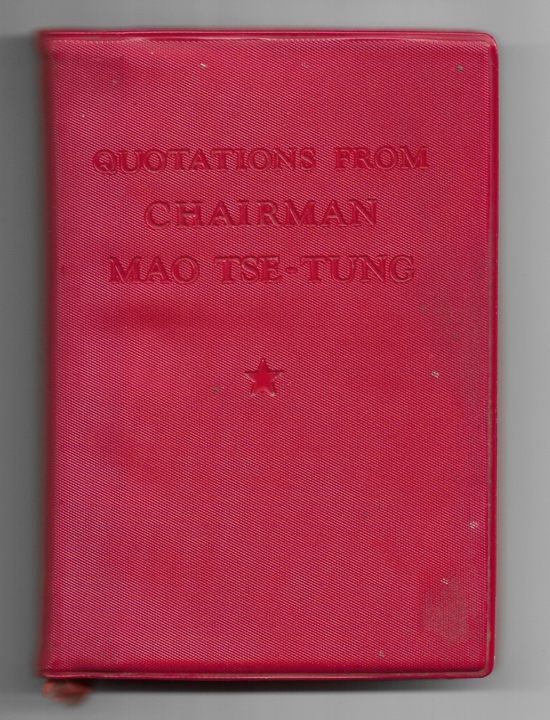
Mao Zedong, however, would not surrender and instead made plans to return to the spotlight with his wife, Jiang Qing. Starting in 1966, they criticized an entrenched party for turning into a sclerotic adversary of the people and called on the young to rise up in a coup. The revolution must continue indefinitely if the rights of the people were to be preserved. This was the fresh insight Mao wished to impart to the populace. With the release of the Little Red Book, a genuine political education for Mao, hundreds of images of him were posted across the country. He became famous by riding the CCP to prominence. As he overthrew Deng Xiaoping, he also solidified the cult of his ego. However, until 1969, considerable unrest was generated by the Red Guards, an army of students. Mao personally called in the troops to quell the unrest and prevent a civil war.
Declining power against a backdrop of a cult of personality
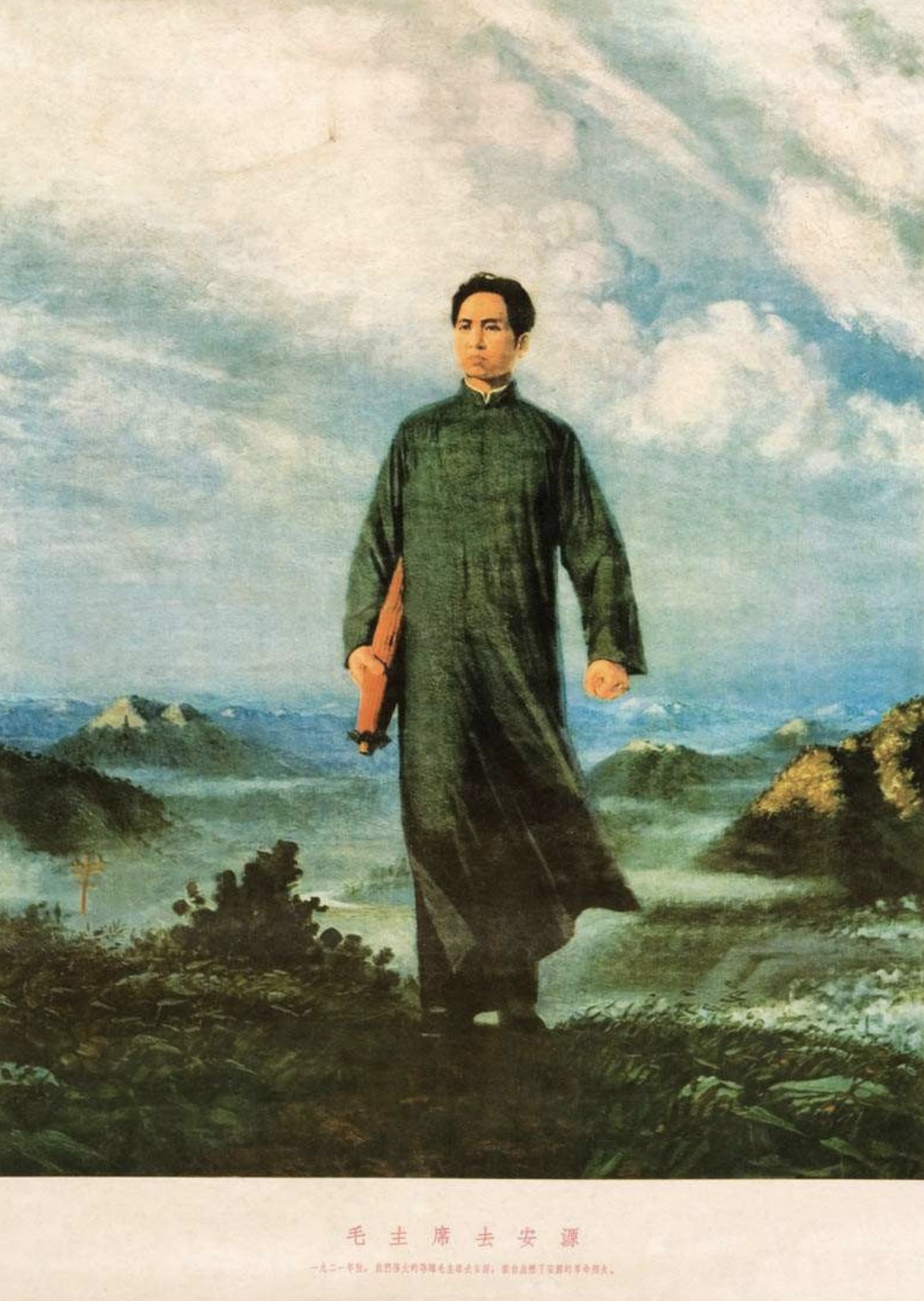
Mao Zedong’s political activities and communist beliefs earned him the nickname “The Great Helmsman” beginning in the 1970s. As an added bonus, the cult of personality was institutionalized for a considerable period of time. Portraits of the leader were widely disseminated, and anybody caught defacing one faced the possibility of a short jail sentence or possibly execution. From 1949 through 1962, Mao was never without his lone official photographer, Hou Bo, whose pictures were used to spread communist party propaganda.
The “Official Portrait of Mao Zedong at Tiananmen Square” by Zhang Zhenshi was printed in two billion and two hundred million copies during the Cultural Revolution and distributed all throughout the country. The 900 million copies of Liu Chunhua’s 1967 artwork “Chairman Mao en route to Anyuan” There was also an artwork by Dong Xiwen named “The Founding Ceremony of the Nation” and a song praising Mao titled “The East is Red“. This one depicts Mao’s proclamation of the new Republic, but Xiven paints over it whenever a major player in Chinese politics dies. The “Little Red Book” also contributes to Mao’s personality cult.
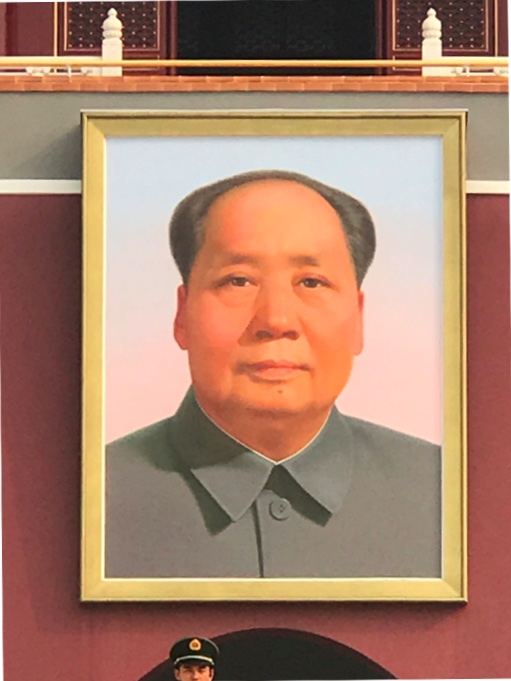
The leader’s influence, however, was waning. Therefore, Zhou Enlai, his Prime Minister, was responsible for restoring order and enforcing a more practical policy. More peace and order might be established as a result. Timonier’s influence dwindled as he declined in health, and he left politics in 1974.
Mao Zedong’s death
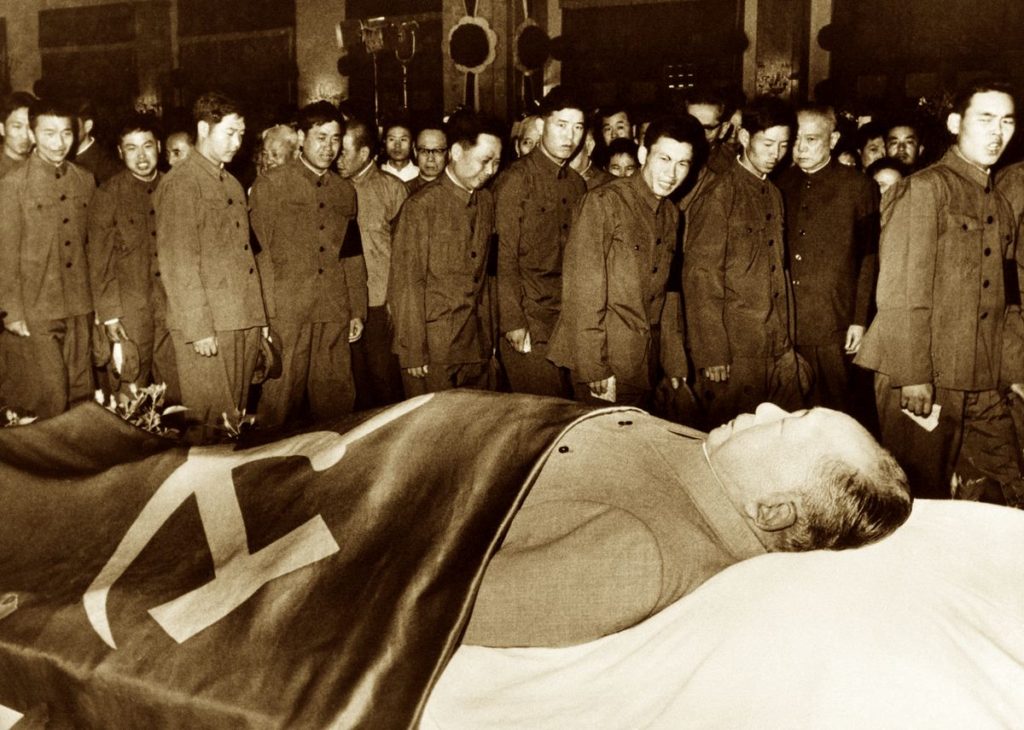
On May 11, 1976, Mao Zedong had a heart attack. On September 9 of that year, he passed away from Parkinson’s disease. Even though he had requested cremation, his remains were embalmed at the request of his political office. Afterward, on May 24, 1977, he was laid to rest in a mausoleum erected in his honor from November 24, 1976, until the present day in Beijing’s Tian’anmen Square. His political blunders led to genuine tragedies, including the deaths of nearly 80 million people, and his ideology led to the foundation of a totalitarian regime. The irony is that he is still revered in China since he was the catalyst for the country’s modernization and regaining of its independence.
Mao Zedong and his family
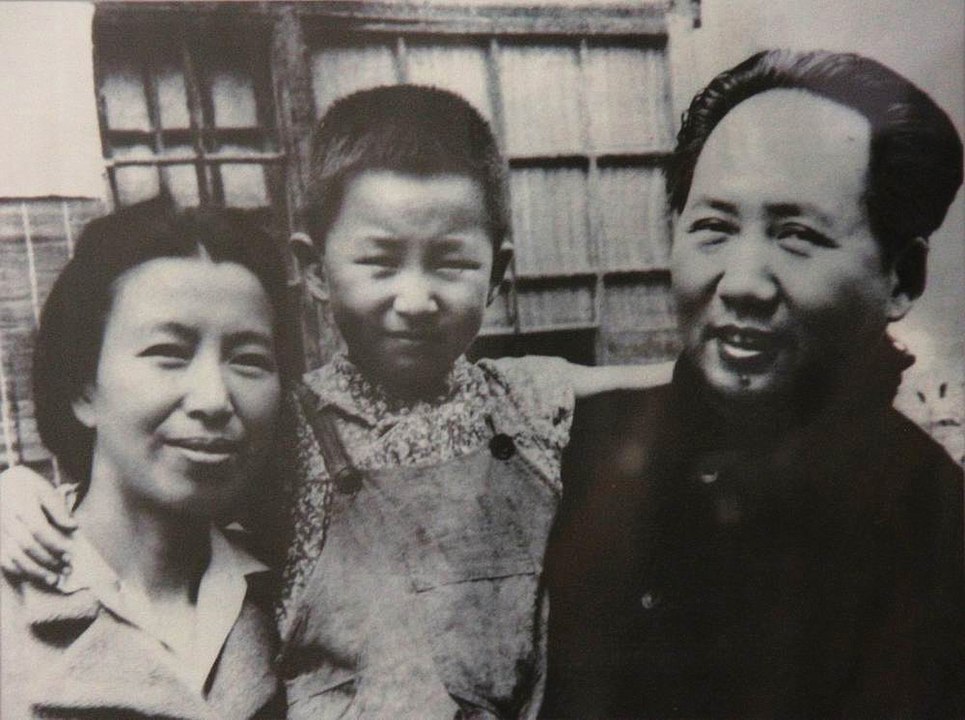
Mao Zedong had four marriages. To begin with, he had a relationship with Luo Yixiu, whom he wed against his will when he was 13 and she was 17. Unfortunately, she passed away just three years into their married life. He married Yang Kaihui but eventually divorced her for his third wife. During the 1930s, nationalists had Yang Kaihui put to death. Among Mao Zedong’s wives, He Zizhen was the third and last. Jiang Qing (formerly known as Lan P’ing) was a 24-year-old actress when she married the leader in 1939; she remained by his side until his death and was a pivotal figure in the Cultural Revolution.
There were a total of 12 children born to Mao Zedong; just three of them are still alive and well now. He has three daughters, Mao Anying, Mao Anqing, and Mao Anlong, from his second marriage. And then, in his third marriage, he produced three males and three females. Then, in 1940, Mao’s beloved daughter, Li Na, was born to him and Jiang Qing. She had a prominent role in the Chinese Communist Party, but after suffering from despair, she withdrew from view.
In his latter years, Mao Zedong was no longer living with Jiang Qing and was heavily influenced by his numerous mistresses, particularly Zhang Yufeng. Mao Zedong’s family consisted of three members: brothers Mao Zemin (1896–1943) and Mao Zetan (1905–1935), as well as an adopted sister, Mao Zejian (1905–1929). When the civil war broke out, the Guomindang had all three of them put to death. Mao Yuanxin, born in 1941, was an important participant in the Cultural Revolution. He was the son of Mao Zemin and the nephew of Mao Zedong.
TIMELINE OF THE MAO ZEDONG
December 26, 1893: Born in Shaoshan, a village in Hunan province
Raised in a wealthy peasant household as the son of Mao Yichang and Wen Qimei.
1911: Mao Zedong joins the army
To help overthrow the Manchu monarchy and create the Republic, Mao Zedong enlisted in the nationalist army during the height of the revolution. But he didn’t like being a soldier, so he got out of it as soon as he could.
1918: Graduates from Changsha Normal School
But even though he struggled with authority, he was able to complete his education.
1919 : Mao was hired at the university library in Peking
As a self-taught person, he used this time to learn more. He studied Marxist ideas and Western philosophy, but he stayed true to Chinese customs.
July 21, 1921: First meeting of the CCP
Participating in the inaugural congress of the Chinese Communist Party, activists from different Chinese Marxist parties converge on Shanghai. Since the turn of the twentieth century, revolutionary groups in China have proliferated in response to student and public hopes for more freedom and modernization. Before turning against the Guomindang nationalists and achieving victory in October 1949, the CCP first collaborated with them. The future leader of the Chinese Communist Party, a youthful Mao Zedong, is among the participants. He was a very small player for a Changsha-based organization.
April 12, 1927: The Guomindang launched the offensive against the Shanghai insurrection
Chiang Kai-shek began his first large-scale battle against communism in response to a worker rebellion in Shanghai. The Nationalist leader’s fight against the Communists was successful and violent, just like this insurrection that was brutally put down. During the Northern Expedition, Chiang Kai-shek split with the Communists and successfully defeated the “warlords.” Mao led the Communist Party into conflict with Chiang Kai-shek’s authoritarian military regime beginning in 1934 and lasting for the next 22 years.
November 1, 1927: Mao settles in the Jinggang Shan
The Chinese Communist Party ousted Mao Zedong after the failure of the harvest uprising (Autumn Harvest Uprising) he organized. His first soviet was founded during his time spent in exile in the Jinggang mountains. Contrary to the Marxist-Leninist doctrines that had previously governed the Chinese CP, Mao turned to the peasants. His “Report on the Investigation of the Hunan Peasant Movement” was written during this period. His ban would end after a year. But what really gives him pause is the juxtaposition between the collapse of the urban insurrections and the stability of his rural soviet.
October 15, 1934: Beginning of the Long March
As Guomindang (Nationalist Party) forces advanced, communists fled Jiangxi. At that point, they would have to travel approximately 12,000 kilometers to reach Shaanxi. Mao Zedong became chairman of the Communist Party of China during this time.
October 20, 1935: End of the Long March
Rebel Communist forces commanded by Mao Zedong finally made it to Yenan in northern China after a year-long march across the country. Out of an estimated 100,000 soldiers at the outset, just 8,000 made it to the end. This trip not only saved the Communists from being captured by the Nationalists, but it also boosted the reputations of the survivors, most notably Mao. The communists would be able to relocate to other areas and keep fighting the nationalists.
October 1, 1949: Foundation of the People’s Republic of China
The People’s Republic of China was declared by Mao Zedong on the balcony of the Forbidden City in Beijing. After years of fighting between nationalists and communists, Mao, head of the Chinese Communist Party, finally ended the conflict. The “Great Helmsman” was elevated to head the government’s Central Committee. This advancement extends the Cold War into Asia. From 1949 until his death on September 9, 1976, Mao ruled China with an iron fist.
February 27, 1957: Launch of the Hundred Flowers Campaign
In a public address, Mao declared the commencement of an initiative to expand citizens’ rights to free speech. Since May 1956, he had been working on this effort to promote criticism of the ruling party. Ideally, he’d win over some smart people. However, this independence soon worked against the CCP, as they were seen as a new ruling class grabbing control. Unhappiness runs deep throughout the nation, giving weight to Mao’s calls for criticism and forcing the administration to back down. A short time later, persecution and mass deportations to work camps put a stop to the movement. The size of the Hundred Flowers movement foreshadowed that of the Cultural Revolution.
May 5, 1958: Mao’s Great Leap Forward
On the occasion of the Communist Party’s Eighth Congress, Mao declares radical changes in Chinese society. The CCP wanted to forsake the Soviet-inspired industrial program, so it embarked on a massive collectivization effort centered on people’s communes, which were more essential than any of the existing models at the time. One of the goals was to “stand on both feet,” or to boost manufacturing and farming. However, the worst famine in a century was caused by a genuine catastrophe. Between 15 and 30 million lives would have been lost in this one.
August 18, 1966: Beginning of the Chinese Cultural Revolution
Lin Biao, the Army’s commander, led a massive protest against President Liu Shaoqi’s revisionist policies on the streets of Beijing. Red guards, most of whom were students, marched with copies of Mao Zedong’s Little Red Book by the thousands. They damaged “bourgeois” institutions and vandalized monuments to the past as a way of rejecting Western influence. All of China’s major metropolises would be hit by this proletarian Cultural Revolution. As a result, it would have an impact on numerous communist nations.
September 9, 1976: Mao Zedong died in Beijing at the age of 82
Known as the “Great Helmsman,” he has been China’s leader since 1949. His death brought together the ultra-maoist “gang of four,” including his widow, and the reformists headed by Deng Xiao Ping. He was the theorist and practitioner of a unique communist approach, completely distinct from his great communist brother. The September 13 funeral would not be open to any foreign delegations.
Bibliography:
- Wilkinson, Endymion (2018). Chinese History: A New Manual (5th paperback ed.). Cambridge, Massachusetts: Harvard University Asia Center. ISBN 978-0998888309.
- Ng, Yong-sang (1963). “The Poetry of Mao Tse-tung”. The China Quarterly 13: 60–73. doi:10.1017/S0305741000009711.
- MacFarquhar, Roderick; Schoenhals, Michael (2006). Mao’s Last Revolution. Cambridge, MA: Harvard University Press. ISBN 978-0674027480.
- Dikötter, Frank (2010). Mao’s Great Famine: The History of China’s Most Devastating Catastrophe, 1958–62. London: Walker & Company. ISBN 978-0802777683.


